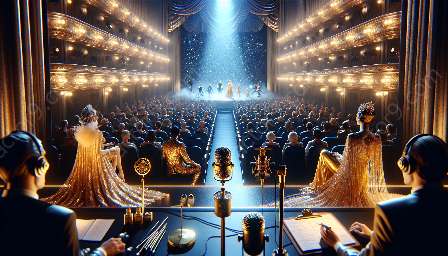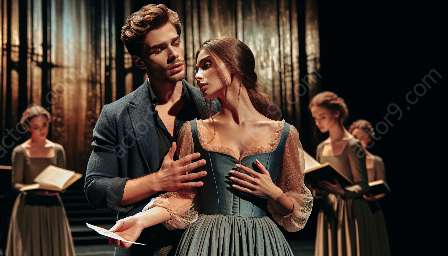Voice acting is a multifaceted art form that often requires performers to engage in acrobatic performances, both in terms of vocal expression and physicality. A successful voice actor must possess not only a wide range of vocal techniques but also the ability to convey physical movement and energy through their voice alone.
Vocal Exercises for Acrobatic Performances
When it comes to acrobatic performances in voice acting, vocal exercises play a crucial role in preparing voice actors for the physical demands of the role. Here are some vocal exercises and techniques that are suitable for acrobatic performances in voice acting:
- Breathing Exercises: Proper breathing techniques are essential for sustaining the energy and stamina required for acrobatic voice acting performances. Voice actors can benefit from diaphragmatic breathing exercises to improve breath control and endurance.
- Range Expansion: Voice actors should work on expanding their vocal range to encompass the diverse characters and emotions they may need to portray during acrobatic performances. Range expansion exercises such as sirening and vocal sirens can help voice actors develop a broader vocal spectrum.
- Articulation and Diction: Clear and precise articulation is vital for conveying the physicality of a character through voice alone. Tongue twisters and diction drills can help voice actors improve their enunciation and pronunciation, allowing them to express physical movements through vocal clarity.
- Strength and Flexibility: Just as acrobats need physical strength and flexibility, voice actors can benefit from exercises that strengthen their vocal muscles and increase flexibility in their vocal apparatus. Lip trills, tongue twirls, and vocal warm-ups can help voice actors achieve greater vocal agility and strength, enabling them to perform acrobatic voice acting feats with ease.
- Body Awareness: Developing a keen sense of body awareness can help voice actors embody the physicality of their characters. Practicing mindfulness and somatic exercises can assist voice actors in understanding and expressing the physical movements and gestures associated with their roles.
- Character Physicalization: Voice actors can benefit from physically embodying their characters during rehearsals and practice sessions. By engaging in character physicalization exercises, such as mirroring movements and expressive gestures, voice actors can enhance their ability to convey physical actions through voice modulation and inflection.
- Improv and Movement Integration: Incorporating improvisational movement exercises into voice acting rehearsals and training sessions can foster spontaneity and responsiveness in portraying physical actions vocally. Voice actors can explore improvised movements while vocalizing character lines, allowing for a seamless integration of physicality and voice performance.
Physicality and Movement for Voice Actors
Physicality and movement are integral components of voice acting, especially when it comes to acrobatic performances. Voice actors must be able to convey a character's physical actions and expressions through their voice alone, creating a vivid and dynamic portrayal. Here are some techniques and exercises for integrating physicality and movement into voice acting:
The Versatile Voice Actor
A successful voice actor is a versatile performer who can seamlessly integrate vocal acrobatics, physicality, and movement into their craft. By honing their vocal techniques through specific exercises for acrobatic performances and embracing the physical aspect of their characters, voice actors can elevate their performances to new heights, captivating audiences with dynamic and immersive portrayals.
Mastering the art of acrobatic voice acting requires dedication, practice, and a holistic approach to vocal and physical training. With the right vocal exercises, techniques, and a keen focus on physicality and movement, voice actors can bring characters to life in ways that defy gravity and leave a lasting impression.




























